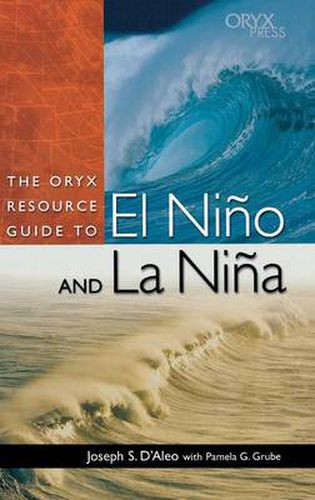Readings Newsletter
Become a Readings Member to make your shopping experience even easier.
Sign in or sign up for free!
You’re not far away from qualifying for FREE standard shipping within Australia
You’ve qualified for FREE standard shipping within Australia
The cart is loading…






Fish die. Seagulls starve. Economies wither. And that’s just in the coastal villages. El Nino - The Christ Child - and its climatological opposite, La Nina, are global events so powerful and strange they virtually have personalities. Many remember the El Nino and La Nina seasons of 1982-83 and 1997-98, which brought floods, tornadoes, droughts and snow to unusual locales. Increased study of these tropical Pacific phenomena, also known as ENSO (the El Nino and Southern Oscillation), have now enabled scientists to predict the ENSO state as much as 12 to 18 months in advance and have helped to shape weather prediction in general. Here, the basic causes and effects of El Nino and La Nina are chronicled for anyone in search of information on these natural phenomena. Chapters are devoted to: the history of ENSO; its influence on global weather and on the United States, including the ecosystem; and how governments and industries world-wide are utilizing new weather data to harness ENSO’s economic impact, rather than be saddled by it. A chronology tours key events, from the 15th-century diary observations of colonists in Ecuador and Peru, to more recent events like the devastating El Nino of 1997-98, which was responsible for 23,000 deaths and 33 billion dollars in damages. Biographies of important researchers, illustrations and maps and a bibliography are included.
$9.00 standard shipping within Australia
FREE standard shipping within Australia for orders over $100.00
Express & International shipping calculated at checkout
Fish die. Seagulls starve. Economies wither. And that’s just in the coastal villages. El Nino - The Christ Child - and its climatological opposite, La Nina, are global events so powerful and strange they virtually have personalities. Many remember the El Nino and La Nina seasons of 1982-83 and 1997-98, which brought floods, tornadoes, droughts and snow to unusual locales. Increased study of these tropical Pacific phenomena, also known as ENSO (the El Nino and Southern Oscillation), have now enabled scientists to predict the ENSO state as much as 12 to 18 months in advance and have helped to shape weather prediction in general. Here, the basic causes and effects of El Nino and La Nina are chronicled for anyone in search of information on these natural phenomena. Chapters are devoted to: the history of ENSO; its influence on global weather and on the United States, including the ecosystem; and how governments and industries world-wide are utilizing new weather data to harness ENSO’s economic impact, rather than be saddled by it. A chronology tours key events, from the 15th-century diary observations of colonists in Ecuador and Peru, to more recent events like the devastating El Nino of 1997-98, which was responsible for 23,000 deaths and 33 billion dollars in damages. Biographies of important researchers, illustrations and maps and a bibliography are included.